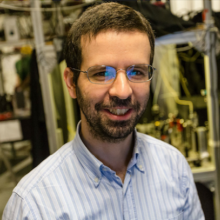
The probabilistic nature of quantum mechanics limits the precision with which observables of a quantum system can be known and measured. Yet, quantum physics offers resources, such as squeezing and entanglement, that do not exist in classical physics. Engineering the state and dynamics of physical systems to achieve quantum-enhanced metrology can have a disruptive impact on atomic-optical magnetometers, which present the highest magnetic-field sensitivity, only limited in small sensors by quantum phenomena.
The sensitivity of an atomic-optical magnetometer is affected by the photon shot noise emanating from photon counting, the spin projection noise originating from uncorrelated atoms, and the back-action noise arising from the interaction between photons and atoms. QUEMAGS aims to address and minimize simultaneously all three sources of quantum noise to demonstrate quantum advantage in atomic-optical magnetometers. To that end, we will generate a squeezed probe light in a novel atomic cell setup and use it to implement a back-action evasion measurement of the atomic spin polarization. We will employ stroboscopic modulation of the probe light synchronized with the atomic spin precession, resulting in back-action evasion. The measurement will project the atomic ensemble onto an entangled state with reduced variance in the spin observable. The reduction of all sources of quantum noise by using squeezed probe light, spin-squeezed atomic ensemble, and back-action evading measurements will result in an atomic-optical magnetometer with highly enhanced sensitivity to weak radiofrequency fields.
This can find applications in several areas of science, technology, and industry that rely on precise magnetic field characterization, including tests of physical theories, biomedicine, geophysics, and security screening. Our work is also relevant to quantum information protocols that rely on light-atom interfaces.
Funding




